

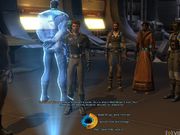

Click here for Part One of my Star Wars: The Old Republic diary.
Every few weeks I get somebody asking me if I'm still playing that terrible Star Wars game, so I'm used to the look of blank despair I get when I say I'm actually playing a pretty good Star Wars game. The kind of scepticism that has been banging through the hallowed halls of the Internet hasn't been unwarranted, though. On paper what BioWare has made is an MMO that fills a hole absolutely no-one in the MMO community was asking to be filled – a single-player-driven MMO that only awkwardly supports group play outside of its Flashpoints and Operations. I've gone over my feelings of grouping in the game before, which can be read here.
But I want to look at exactly why, despite all this, the game works.

As we speak, Glucas, my character based on George Lucas, is on Dromund Kaas. He's been told to go meet with the Revanites, a pseudo cult that worships Revan – a name that KOTOR fans should perk up to. Glucas is on a pilgrimage to join their order while moving increasingly further toward the Dark Side, based on my decision to play him as a complete tool.
He's been chosen to infiltrate their wilderness camp out and rise in their ranks to dig out information on their leader's identity. Entering their hub he meets Dzoun, a sort of kindly hippie who apologises for not having water to offer Glucas.
"STAND ASIDE," quoth Glucas, forgetting the scene requires subtlety. Luckily our hippie friend seems un-phased and welcomes us into the Order of Revan, who explains the history of Revan. His crossing from Sith to Jedi, and later his rebirth.
"That's absurd" says Glucas, and wanders over to NPC Elder Revanite Jhorval.
"You are here because of the order of Revan," says Jhorval, "Are you ready to die for it?"
"What?"
He points to a cave that's been dedicated to Darth Revan, where Glucas would take part in a trial to determine his graduation status into their cult. At the end of the cave is a statue carved in Revan's form that Glucas must bow down to, but by the time he's reached it, it's surging with fire and glowing orbs. He sees coming in behind him someone dressed in the same garb as our Revan in stone, then is suddenly struck by a bolt that shoots down from the top of the cave.
"Dripping with the blood of the womb, you are reborn," says Jhorval when we find ourselves outside again.
He explains: "Everything you were - all of it is dead, buried inside that cave."
"I don't get it," Glucas replies. Baffled and confused, so begins Glucas' entry into the Order of Revan.
It's a quest that wouldn't be out of place next to BioWare's single-player fare, in fact the game as a whole feels like it comfortably slots in next to their previous efforts.

Still, the game's comparisons to World of Warcraft have been overflowing – you might remember RIFT's Will Cook complaining that the use of standard WoW-like action-bar combat suggested BioWare was really failing to innovate in the genre. In reality, the only things worth comparing it to are the games that share the same genetic code that can be traced back to BioWare, and that are virtually identical in quality when we're comparing solo content. TOR is proof that big B can do single-player well regardless of format. The question is whether this is something that should even matter to a multiplayer game.
The answer is, in reality, not particularly. But it should matter for its role as an experiment. Story-driven MMOs have long been stuck as just a hypothetical in the mines of game development; there aren't many that have even made it to the Petri dish stage of experimentation. This is the first time we've ever had a working model of single-player storytelling on a massive scale. The result is an MMO that players – also for the first time – latch onto emotionally.
Over on YouTube we're seeing an increase in channels dedicated to following just the cinematic storyline of the game, editting out all gameplay content to create personal films of individual player experiences. Similarly romance plotlines with companion characters are mapped out in detail, with every variable of cutscene available to watch. This is old news in gaming, but new territory for MMOs.
But BioWare's firmly held belief in injecting story into everything still doesn't necessarily work in a traditional MMO environment. The studio has proved it can take a genre like this and still produce more rounded companion characters than anyone you can find in the likes of Skyrim, but the problem with relying on companion characters to tell a story is inevitable repetition. The game has a limited pool of possible AI mates, leading to hundreds of thousands of users wandering through zones in a parade of identical companions, each taking part in different but still largely similar storylines. It's a game of hundreds of thousands of people playing their own single-player experience.
But TOR shouldn't – and really can't – be compared to the current stock of MMOs on the market. This is an intermediate object – something that exists exactly in between single-player and multiplayer. When it comes to understanding what makes the game successful, contrasting it with WoW makes as much sense as comparing a TV to an iPad. TOR's real success lies in it being the first trans-genre MMO, combining a solo player focus with a wider, persistent world of peers. And that's nothing to shrug at.
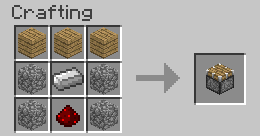

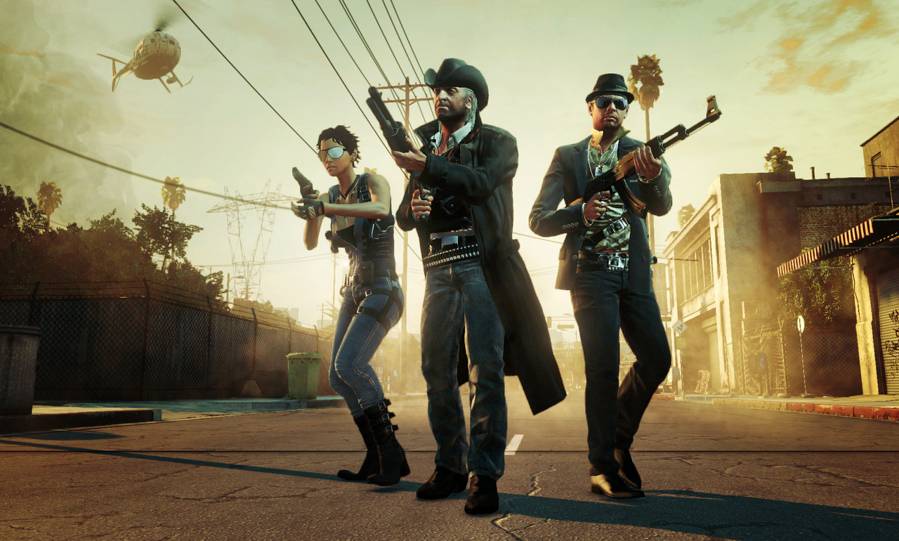

 A first look at Modern Warfare 3 Content Drops 4, 5 and 6
A first look at Modern Warfare 3 Content Drops 4, 5 and 6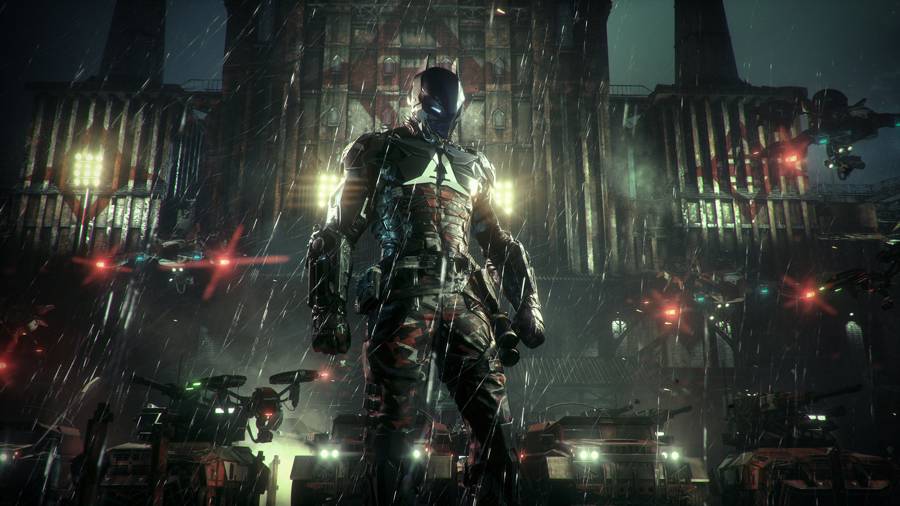 Batman Arkham Knight Guide: The Line Of Duty Guide
Batman Arkham Knight Guide: The Line Of Duty Guide I was going to buy a Saturn: 20 Years of PlayStation
I was going to buy a Saturn: 20 Years of PlayStation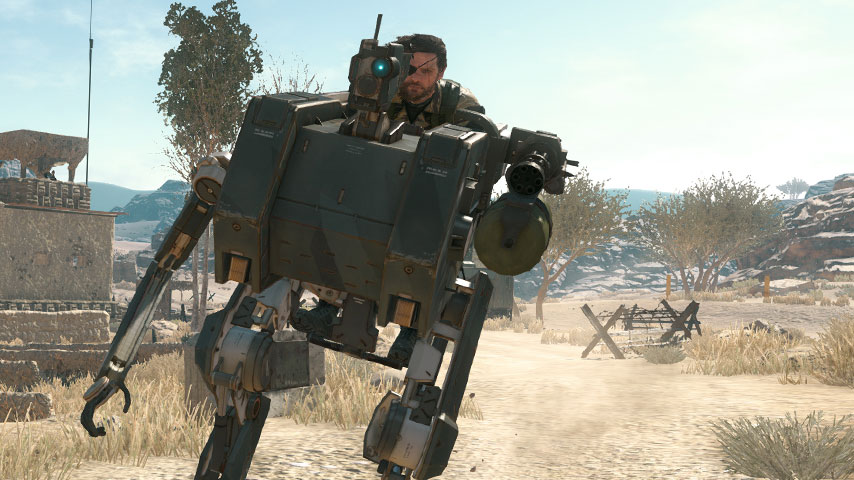 Metal Gear Solid 5: The Phantom Pain – where to find all 10 Memento Photos
Metal Gear Solid 5: The Phantom Pain – where to find all 10 Memento Photos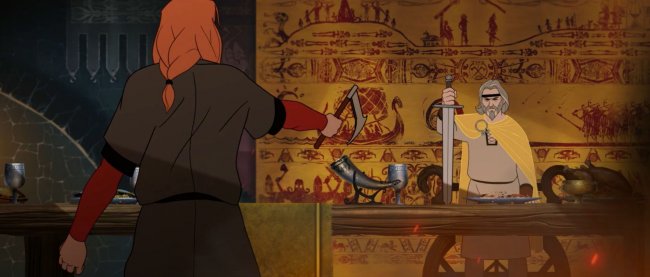 Raising the Banners
Raising the Banners